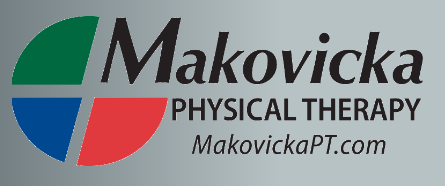Helping Your Athlete Prevent Injuries
Makovicka Physical Therapy is available to help you keep your young athlete safe and having fun. Information presented here addresses hydration, injury prevention, and recognizing injury versus soreness.
Injury Statistics:
More than 3.5 million children (about twice the population of Nebraska) 14 and under receive medical treatment for sports injuries per year. 62% of sports injuries occur in practices vs games. Overuse injuries are the most common injury due to youth athlete’s having immature bones, not getting enough rest, and/or poor conditioning/strength training.
Injury Prevention:
To help reduce the risk of injury, a proper injury prevention/performance program can be implemented. Key components to the program should include body weight strength training, balance/proprioception exercises, agility training, and stability and mobility exercises dependent on child presentation.
Hydration:
Proper hydration is crucial to staying healthy and requires preparation far before hitting the court/field.
Have your child(ren) follow these steps to avoid dehydration:
• Drink plenty of fluids prior to exercise, even the day before.
• Continue to drink water throughout the workout. In addition to water, turn to fruits to replace electrolytes and fluids.
• Gatorade or other sugary drinks are not necessary to replenish fluids. Water is the best hydrator.
• Cramping muscles, dry mouth, headache, nausea, pale skin, profuse sweating, rapid
heartbeat and dizziness are warning signs that the player may be becoming dehydrated.
Stretching, Flexibility and Warmups:
Stretching and flexibility are both important. If done right, stretching will lead to flexibility. It's well known that those that are flexible are less prone to Injury. Dynamic stretches include controlled movements that gradually increase in reach, speed, or both. These should be performed prior to participation to help reduce the risk for injury.
Soreness vs. Pain: How to Tell the Difference
When a player experiences discomfort, it is important to understand the difference between exercise-related muscular soreness and pain. Muscular soreness is a healthy and expected result of exercise, especially when new activity is performed that the body is not used to.
Pain is an unhealthy and abnormal response. Experiencing pain may be indicative of injury. Each person's body has a different activity threshold dependent upon many factors, including age, baseline strength, and participation level. Remaining on the safe side of the threshold will result in muscular soreness. Exceeding the threshold will result in pain.
Muscle Soreness:
After activity, muscular soreness typically peaks 24-72 hours after activity. This is the result of small, safe damage to muscle fibers and is called Delayed Onset Muscular Soreness (DOMS). During this time, muscles may be tender to touch and feel tight and achy. Movement may initially be uncomfortable but moving and gently stretching the muscles will help to decrease soreness.
Pain:
In contrast to muscular soreness, players may experience pain during or after performing exercise. This may feel sharp and be located in their muscles or joints. This pain may linger without fully going away, perhaps even after a period of rest. This may be indicative of an injury. Pushing through pain can result in injury. If a player feels that their pain is extreme or is not resolved after 7-10 days, s/he should consult with a medical professional.
Consultation:
At Makovicka Physical Therapy, we want your child to be able to perform at their utmost level. We work closely with Saint James Athletics to assist with whatever needs might arise. We can offer functional screens which can target deficient areas that might need more focus. If your child does start to experience pain/injury, we offer free injury assessments to determine course of action: additional rest, physical therapy, or a need to be seen by physician. Appointments may be made easily from the homepage of makovickapt.com.

| Muscle Soreness | Pain | |
|---|---|---|
|
Type of discomfort: |
Tender when touching muscles, tired or burning feeling while exercising, minimal dull, tight and achy feeling at rest |
Ache, sharp pain at rest or when exercising |
| Onset: | During exercise or 24-72 hours after activity | During exercise or within 24 hours of activity |
| Duration: | 2-3 days | May linger if not addressed |
| Location: | Muscles | Muscles or joints |
| Improves with: | Stretching, following movement | Ice, rest |
| Worsens with: |
Sitting still | Continued activity |
| Appropriate action: | Resume offending activity once soreness subsides | Consult with medical professional if pain is extreme or lasts >1-2 weeks |
